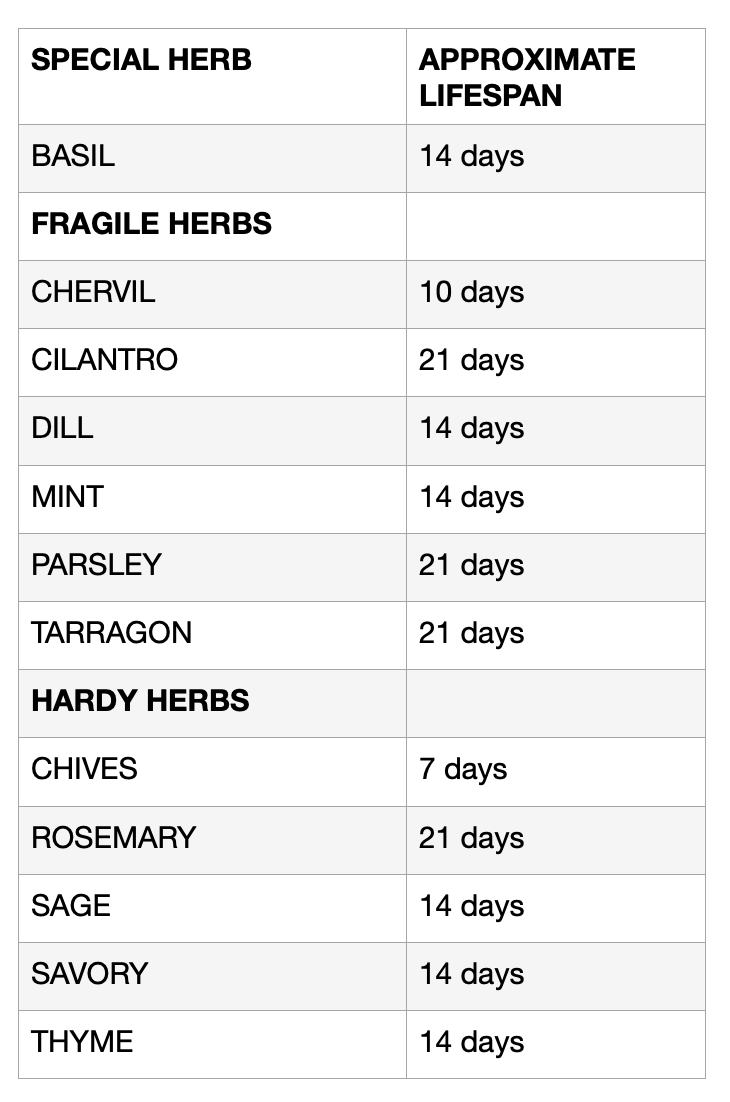Ep 02 HERBS
The Simmering Chef Podcast Link
Welcome to The Simmering Chef.
Cooking with a smidgen of anger, a pinch of crass, a dollop of irreverence, a sprinkling of science, and a handful of spice.
Thank you everyone for listening today. The inaugural episode went well and I am so pleased and thankful for your responses. This week, we’re covering herbs.
Before we begin, a shout out to a friend having a birthday today. Joyeux anniversaire mon ami Dale. Restez au chaud à Boucherville et dégustez les sushis.
Let’s get started.
Today’s query.
Dear The Simmering Chef,
I love the flavor of fresh herbs, but they go bad almost as soon as I bring them home. It is so frustrating that I throw out so much. Instead of going out and buying them, it would be easier just to rip dollar bills over the trash. It’s the same thing. Any advice would be appreciated.
Wilted and Wasted in New York City
Dear Wilted and Wasted,
I feel your pain. This past week I bought a bunch of cilantro, carefully trimmed off the stems’ bottoms, plopped them in an inch of water, and then over the next 24 hours, I watched them shrivel into fragile husks of their former verdant glory. Like you, I walked to the bin and dumped them. I don’t even have a way to compost because I live at too high of an altitude. Disgusting waste.
Let’s start with some basics. I call it our “enemies list.” All the things that help or hinder the herbs’ growth in soil are the same things that quicken their demise once they've been picked. Here are the four horsemen of the herbs’ apocalypse: light, moisture, oxygen, and temperature.
Essentially, herbs’ morphology is loosely knitted fiber networks surrounding cells filled with water. Throw in some phytonutrients, carbohydrates, and flavor, and you got yourself an herb. Unless it’s a genuinely hardy herb, anything weakens these structures. Too much water? The fibers break down, and they slime out. Too little moisture, the herbs suck on their own reserves until there’s nothing left but husks waving in the wind. Too much heat? They brown. Too much oxygen? Leaves start yellowing. It’s a mess!
You’re thinking, what does all that have to do with me? For you, I just want fresh herbs that last longer than 2 hours. Knowledge helps you make better choices on how to handle your herbs. Know that you can control light, moisture, oxygen, and temperature, and here’s how.
First, let’s have a light bulb moment. It doesn’t help that when you go to the store, the produce section’s misting system is running 24/7. That constant state of moisture isn’t helping your herbs stay beautiful. All that is smoke and mirrors, and by the time you get home, that gorgeous Italian parsley you carefully chose, looks like it has the vapors.
When you shop, you buy three types of herbs: fragile, hardy, and basil. Each has a specific treatment to increase their longevity. Follow these steps, and you should see your herbs’ shelf life increased and your garbage bin not filled with wasted money. All it takes is a little ritual.
The moment you get home, get those herbs out of their bags or containers, remove the rubber bands and twist ties, and wash your herbs in coolish lukewarm water. The water temperature helps the cells stay plump. A lettuce spinner works well here. Gently swish the herbs around in the water, then spin dry. Remember, moisture is one of the enemies. Gotta get rid of the moisture.
Now, we’re going to start with basil. It’s easy and carefree. Once washed and dried, trim the stems’ bottoms off, plop into a jar or glass with one or two inches of water, exactly as if they were a bunch of flowers, and store at room temperature in a softly lit spot. Don’t let sunlight hit those leaves or they’ll go into oxidative stress and start to yellow. If they last that long, this method is good for about two weeks.
Hardy herbs, once, washed, remove them from the spinner and gently pat the leaves and stems dry. Transfer and spread them out in a single layer onto a slightly damp paper towel, cover them with another slightly damp paper towel, and loosely roll them up. Plop into a sealable plastic bag, and store refrigerated.
Now, the fragile herbs need a little more care. Think of them as temperamental flowers needing to sip water constantly to stay fresh. Once you’ve washed and spun them, spread them onto towels and gently pat dry. Trim the bottom stems off and plop them into containers filled with one inch of water. If there are any low-hanging leaves that will get submerged, remove them, unless you want a mini swamp in that little jar. If it's deep enough, cover the herb jar with a lid, or, if the herbs are too tall and peeking over the jar’s top, cover with a plastic bag secured with a rubber band, and refrigerate.
Follow these steps, and you will lengthen your herbs' lives by at least 7 days and some as much as 21 days, giving you plenty of time to enjoy them in your cooking.
Go to my substack page and at the bottom of the transcript, you will see a chart to help you identify the herb types and their estimated extended shelf life.
Thank you so much for listening. I appreciate you and look forward to our visit next week
Fail brilliantly and eat well.
Tha Simmering Chef


